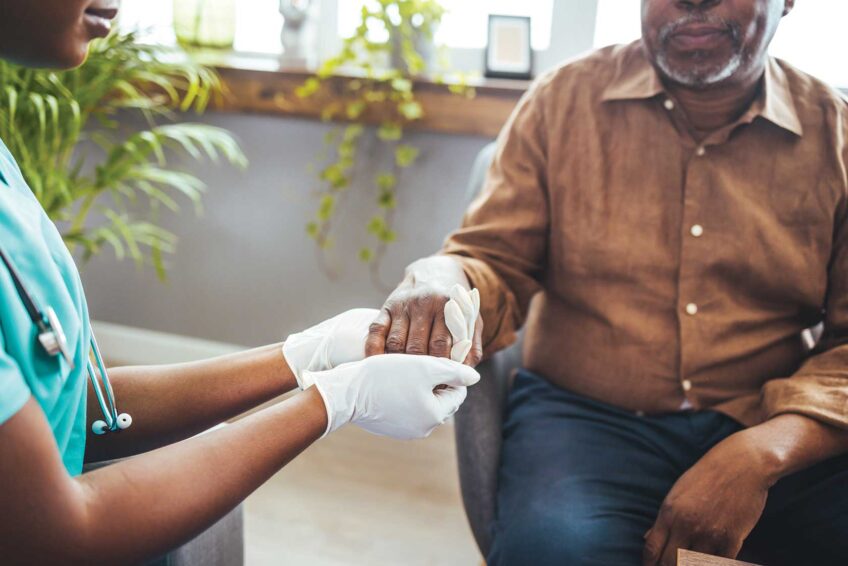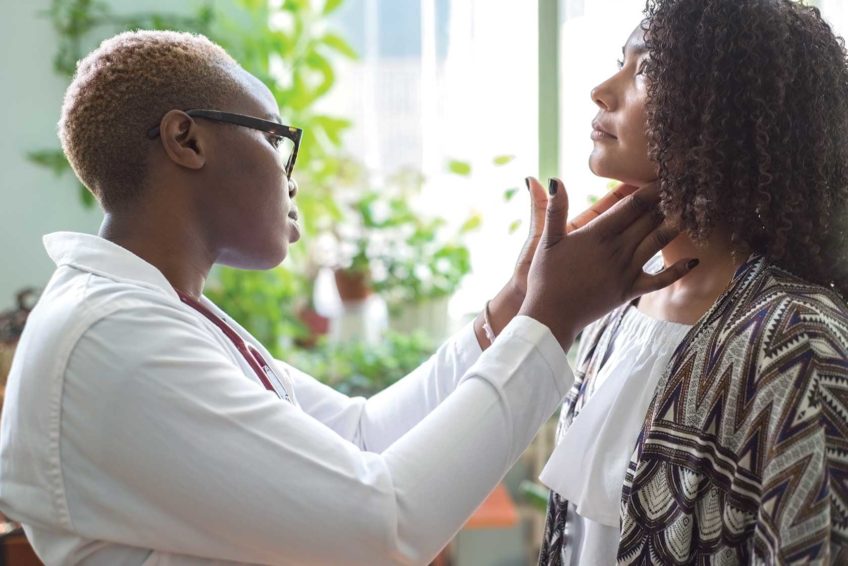
James Hooley, Chief of Boston Emergency Medical Services (EMS), seems to be a pretty even-keeled guy. But there’s one thing that really gets him miffed … if you don’t call him.
It’s not that you’re calling Hooley personally; you’re calling for his services at 911. The number 911 has been the universal emergency number in this country since 1968. It’s what you dial for any medical emergency, such as injuries, heart attacks, motor vehicle accidents … and strokes.
But here’s the thing. People are very quick to call for a heart attack or injury, but they are not so fast — if at all — to call for a stroke.
A survey funded by the American Heart Association/American Stroke Association found that 35 percent of a sample of more than 2,000 people interviewed experienced at least one sign of a transient ischemic attack (TIA), often called a mini-stroke. Yet, only 3 percent called 911. The typical response was to wait, rest or take medicine. Three out of four respondents admitted that they didn’t even know what a TIA was.
In another study presented this year at the International Stroke Conference, researchers in Miami found that the most common reason people did not call 911 was hospital preference. They did not trust where the ambulance would take them, and preferred to drive themselves or be driven.
That’s not a wise thing to do, warned Hooley. “You could get worse.” But even more than that, the time spent driving could be best used for pre-hospital treatment by EMS responders.
Some people don’t call because their symptoms go away, but you should still call, advised Hooley. “They could be a warning sign. People with atrial fibrillation could throw a clot and not know it.” Also, a mini-stroke that resolves quickly can be a warning of a more serious stroke in the future.
911 operator – What is your emergency?
Calls are answered by dispatchers, specially trained personnel who obtain essential information in order to send the appropriate responders to the correct location. They ask several key questions: is the person conscious; what are the symptoms; when did they start? What is your call-back number in case of disconnection? More importantly, they need to know where you are. Even if you cannot confirm your location, they can often find you through the assistance of 911 mapping. “It will display as a dot on a map,” Hooley said. Because of this feature, 911 calls from cell phones are now more easily traceable.
When were you last normal?
The paramedics will perform a neurological evaluation, such as the Cincinnati Prehospital Stroke Scale. They’ll observe facial droop, arm weakness and speech.
They’ll check your blood sugar. Hypoglycemia, or low levels of glucose, can mimic the symptoms of a stroke. “You give them glucose and the symptoms go away,” he explained.
They continue to probe: are you on blood thinners; did you recently fall? Altered mental states may be caused by alcohol, drugs or even carbon monoxide.
But their key question is “when were you last normal?” This is an attempt to determine the time passed since the symptoms began. This calculation will help determine eligibility for TPA, a clot-busting medication.
SELF-CHECK
Stroke can have many symptoms, but some tend to occur more frequently. If you suspect that you or someone with you may be experiencing a stroke, below are four things to do for a brief and simple assessment. If you note even one of the symptoms, call 911.
1. Smile — is the smile uneven?
2. Raise both arms — does one drift downward or is it difficult to lift one at all?
3. Repeat a simple sentence, such as “The sun is shining.” Can the person repeat the phrase; are the words slurred; does he/she understand what’s been said?
4. Check the time the symptoms began.
Call 911.
Code Stroke
The major advantage of calling 911 is the quick connection to a hospital. The responders notify the hospital that a patient with a stroke is on the way. At times the dispatchers make the initial contact. The hospital in turn puts into action “Code Stroke,” a series of steps to evaluate and treat the patient as quickly as possible.
“We drive to the closest one that can best handle the patient’s condition,” explained Hooley. Boston has five comprehensive stroke centers that are equipped to manage the most complex cases of stroke. On route the EMS team continues evaluation in preparation for an easy transfer to the hospital’s specially-trained team.
The bottom line
If you are with a person experiencing a stroke, call 911 immediately, and note the time symptoms began. Keep the patient comfortable and calm. But here’s what not to do. Do not allow the person to sleep or take anything by mouth — no water, food or medications.
The bottom line is every minute counts. “Time is brain.” Some people are hesitant to call 911. They don’t want to be a bother, or worry that they might be over-reacting. “Don’t worry about that,” advised Hooley. “If we rule it out, that’s OK. No harm. No foul.”
Even if you are not sure, call. Hooley is waiting. You don’t want to make him mad.
Comprehensive stroke centers
Comprehensive stroke centers are hospitals that have specific abilities to receive and treat the most complex stroke cases. In collaboration with the American Heart Association/American Stroke Association, these hospitals are certified by the Joint Commission, an independent, not-for-profit organization that certifies and accredits over 22,000 health care organizations and programs in the United States. In Boston there are five such centers:
- Beth Israel Deaconess Medical Center
- Boston Medical Center
- Brigham and Women’s Hospital
- Massachusetts General Hospital
- Tufts Medical Center






